A “Survival Backpack” is different than a Bug Out Bag. Where a Bug Out Bag is meant to keep you alive for about 2-5 days while you flee to safety, a survival backpack will contain everything you need to survive for an indefinite amount of time until civilization can get on its feet again.
The Best Survival Backpacks Are
- Durable: They must hold up against whatever conditions nature throws at them.
- Suited for Your Body Size: You need to be able to comfortably hold gear while tromping through the wilderness. Packs too large or wide will get snagged on branches or upset your center of gravity.
- Have Adequate Storage: It is a good idea to make a survival backpack checklist before buying a pack. Then you can see how much space you need.
Best Survival Backpacks Reviewed
5.11 Tactical RUSH72 Backpack
Type: Tactical | Capacity: 47l | Material: 1050 denier nylon
Waterproof: No; nylon is water-resistant | Attachments: MOLLE
The Rush72 has an amazing design with many pockets, compartments, and zippers. The stitching is tough, and the pack can withstand the toughest survival conditions. No wonder the pack has a 5-star rating on Amazon!
The only real downsides of the Rush72 survival backpack are the same ones you’d expect of any quality pack. Its high denier means the pack is quite heavy when empty. It also doesn’t have an internal frame, so it will not be so comfortable if you load it up with more than 30lbs of weight.
Pros
Incredible design
Lots of space and pockets
Comfortable straps
Cons
Pricey
2.6lbs when empty
Best For: Survivalists who want the best tactical survival pack
Osprey Stratos Backpack
Type: Hiking | Capacity: 34-36l | Material: 210 denier ripstop nylon and 420hd nylon pack cloth
Waterproof: No; comes with integrated rain cover | Attachments: Ice axe attachment, straps
If you have decided on a hiking-style pack for your survival backpack, the Osprey Stratos is one of the best picks. I like that it is more discreet than other hiking packs (which tend to come in bright colors and have reflective tape all over them).
As far as comfort goes, the Stratos has an internal frame and compression packs that allow you to keep heavy loads close to your body. Osprey is one of the best-known brands in hiking backpacks, so you can expect a quality product.
Pros
Multiple size options
Lightweight
Internal frame
Load stabilization straps
Sleeping bag compartment
Cons
Pricey
No external tie-downs
Best For: People with back problems or who will be carrying heavier loads.
Condor 3-Day Assault Pack
Type: Tactical | Capacity: 50l | Material: 1000 denier nylon
Waterproof: No | Attachments: MOLLE and D-rings
The Condor, 3-Day Assault Pack, is one of the most popular survival backpacks. The 1000 denier nylon is much more durable than the 200-500d nylon used on most other tactical backpacks.
For its durability, the Condor is surprisingly lightweight. The empty pack weighs about 2lbs, compared to 5+ lbs of other packs. Those extra pounds make a big difference when packing for survival!
Note that this survival backpack isn’t waterproof. You’ll want to get a cover for it or store all your gear in waterproof bags.
Pros
Large capacity
Heavy-duty construction
Seven pockets for organizing gear
Hydration pack compatible
Designed for comfort
Cons
Not discreet
May be too long for short backs
Zippers start to fail under weighty loads
Not waterproof
Best For: People who want an affordable tactical backpack
Skog A Kust BackSak
Type: Dry Bag | Capacity: 35l | Material: 500D PVC with welded seams
Waterproof: Yes; can be submerged underwater briefly | Attachments: D-rings
Here’s the survival backpack you want if you will have to go through severe weather conditions. The 500 denier PVC with welded seams is entirely waterproof. You could even put it completely underwater briefly and still keep your gear dry. Oh, and it floats!
Compared to other dry bag packs, the BackSak is much more comfortable and has more pockets for organization. I just wish it didn’t have reflective trim, in case you don’t want visibility in times of chaos.
Pros
Waterproof
Large size for dry pack
Comfortable
Cons
Reflective trim
Exterior pockets not entirely waterproof
Best For: People who will likely experience heavy rains, mud, snow, or flooding
What To Put In Your Survival Backpack
Hydration System
My survival backpack has a stainless steel water bottle (Amazon link) plus the Sawyer Mini water filter (Amazon link), which is only 2oz and good for 100,000 gallons of water.
It isn’t going to clean water of radioactive materials, but it will completely filter bacteria from water in rivers, creeks, and even puddles, so it is safe to drink.
Read more about how to purify water here.
Tent and Sleeping Bag
If your survival skills are in order, you won’t need these because you will be able to quickly make a shelter out of debris and stay warm by wrapping leaves or dirt around you.
But you’ll probably be more comfortable with a tent and sleeping bag 😉
Recommended Reading – How To Choose The Best Survival Tent
Knife
A knife has lots of uses, including:
- Cutting branches for shelter
- Creating weapons
- Cutting rope
- Cutting bandages
- Digging small holes
- Self-defense
- Hunting food
Since your knife is one of the essential items in the survival backpack, you better make sure it is a good one! Also, follow good knife maintenance, such as always drying it thoroughly before closing it.
Read the Top Survival Knives for Under $100
Cordage
Cord is another survival item with so many possible uses:
- Creating emergency shelters
- Making splints for a broken arm
- Tying poles together
- Fishing or trapping
- Tying supplies to your bag
- Hanging food away from wild animals
- Mending a broken bootlace
- Climbing and rescuing
A paracord bracelet (Amazon link) is an excellent way to keep a lot of cordage on you at all times.
If you are confused about paracord, read this Ultimate Guide to Paracord
Or check out these other awesome Paracord Projects
Tarp or Plastic Sheeting
Why do you need a tarp in your survival backpack? Some of the many uses for a tarp include:
- Making an emergency shelter
- Collecting rainwater
- Wrapping around yourself to protect from rain
- Creating an improvised stretcher to carry an injured person
- Making a hammock for sleeping above ground
- To cover your tent if it starts to leak
- To put on wet ground so you can sit
- For hiding supplies and equipment
- For hauling items
- For use as a floatation device (yep, you can build a raft out of a tarp!)
Read our guide to survival tarps.
Fire Starter
Fire made us human; without it, we’d probably return to beastliness quickly. I hope you have mastered the most critical survival tactics, including making a fire (including making fires in wet and snowy conditions).
I include matches in my survival backpack and a match-less fire starter in case the matches get wet or I run out of them.
Compass and Map
Ensure your survival backpack includes topographic maps of the nearby region and other areas you might flee to. And I should add that it isn’t enough to have a map and compass – you better know how to read the map too!
First aid kit
They should include latex gloves, tweezers, plenty of bandages, painkillers, antidiarrheals, sutures, needles, antiseptics, and safety pins.
Here’s what’s in my wilderness first aid kit.
Cooking Equipment
You could forage or eat chunks of raw meat torn from prey – but you will end up with diarrhea and some weird parasites. Pack a good lightweight camping cook set (Amazon link) in your survival backpack. Mine also includes a folding knife/spoon/fork.
Change of Clothes
Most people pack too many clothes in their survival backpack. You need clothes, but one change will be enough (plus a few changes of socks because wet socks are a disaster for your feet!).
Make sure they are quality materials that dry quickly. And don’t forget a waterproof jacket and a hat with a brim to keep rain and sun out of your face.
Flashlight
Sure, you can survive without a flashlight (Amazon link) – but your chances of survival significantly increase when you have light.
For example, imagine you want to explore a cave to use as a possible shelter. Without a flashlight, you might not notice the gaping hole in the ground and fall to your death.
Multitool
Remember when Aron Ralston used his generic leatherman (Amazon link) to cut off his arm when trapped under a rock? Need I say more about why you need this tool?
Recommended Reading – How To Choose The Best Multitool For Survival
Bandana
Bandanas protect your head from the sun; they can be put over your mouth to keep out dust and used as slings or signaling devices. Yes, pack a bandana in your survival backpack!
Sewing Kit
We are about long-term survival here, so you will want a sewing kit to repair your clothes, tent, sleeping bag, and even emergency first aid.
Shovel
If you want to survive in the long run, how do you propose building a shelter without a shovel (you’ll need to dig underground or at least dig drainage trenches around the shelter)? Or how about how you will dig a latrine or fire pit?
Recommended: 10 Top Survival Shovel Reviews
Crowbar
If you have to survive in the long term, chances are you will not be in the wild. You will be in some populated place. That crowbar will come in handy to open up locked doors, where you can raid for supplies and get shelter. A crowbar also makes a pretty damn good weapon.
You can also get cool mini EDC crowbars (Amazon link). This way, you’ll always be prepared!
Are you prepping for long-term survival in the wilderness? Let us know your insights!
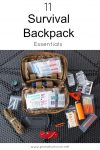
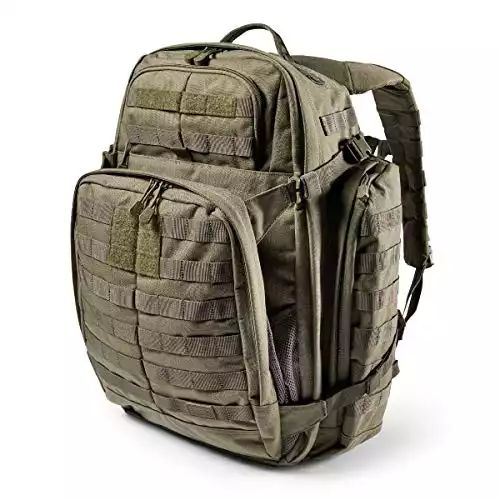
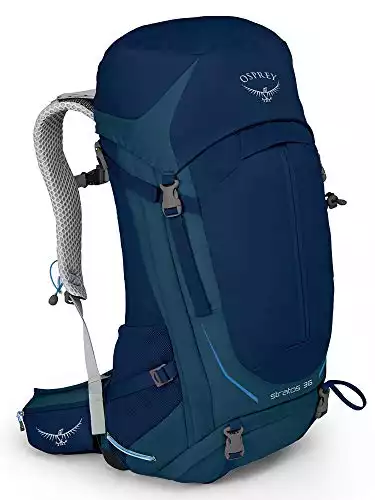
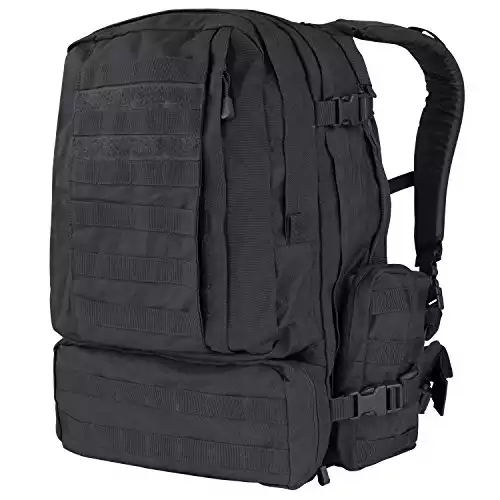
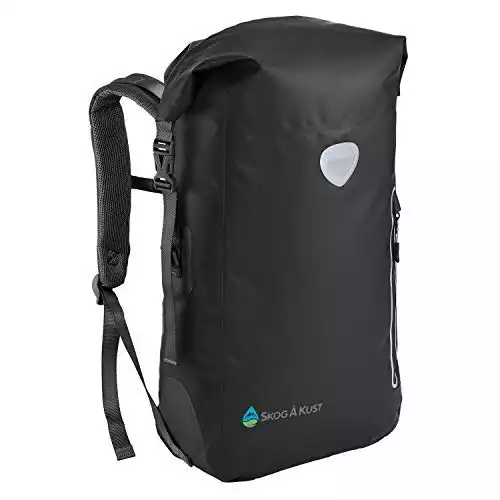
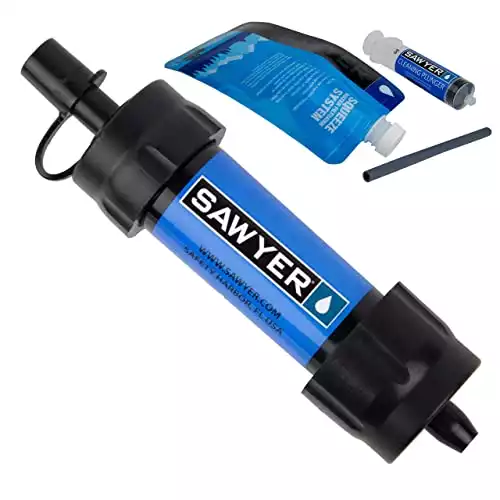
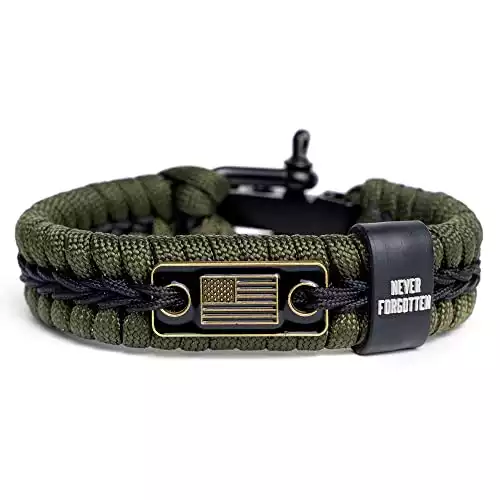
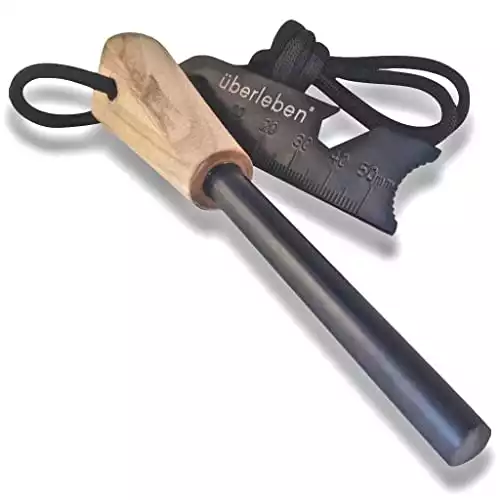
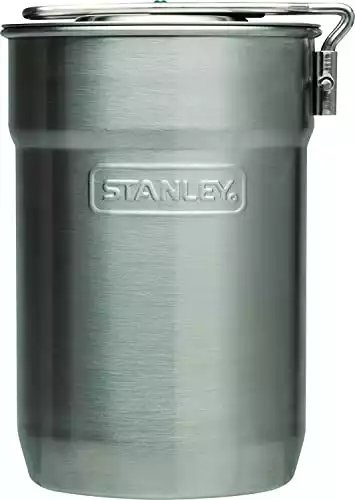
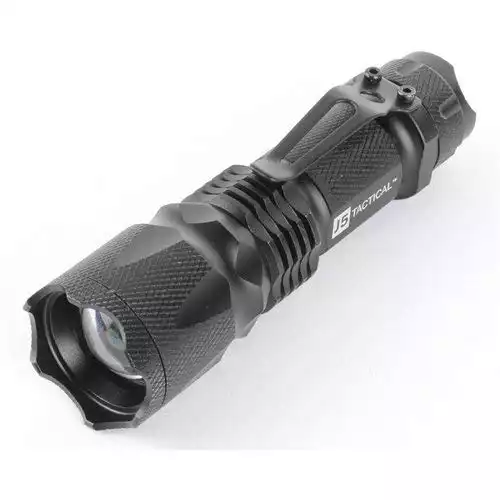
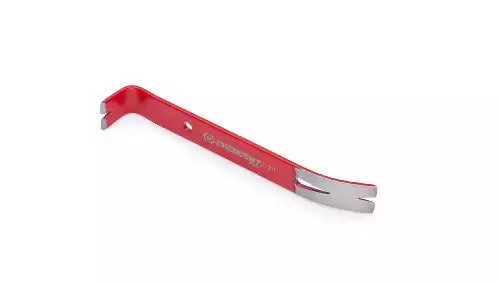


These could save your life! Here are 2 items that you might want to consider adding to your “Bug out Bag”. One is a tent and the other is a sleeping bag. Both are lightweight and will fit into a small Day Pack or Back Pack. The only negative to me, is the color.
I just looked them up on EBAY, again today, and each can be had for @ $20 bucks each. These 2 items could save your life. Please consider adding these to your “stuff”. I’ve used the two man version of the sleeping bag, and it works quite well, especially, if you can not get a fire going, or you don’t want to be “Found” (I got “lost” down in a large Mountain Canyon, while hiking, some years back, and had to spend a late November night out. It was cold and wet and I could not get a fire started even with the use of a road flare. The sleeping bag/ Bivi Bag, kept me warm and dry, all night) Also,, the 2 man version is big enough for an adult and a child or an additional adult. If you have to leave with children, etc., these could be the “ticket” between 2 different options.
They both can be found on EBAY. I have them in my Day Pack and in my Back Pack. These are for emergency use only!
1.) Life Tent – @ $20 bucks each or more depending on the size, either a 1 person or a 2 person tent.
2.) Sleeping Bag/ Bivi Bag – $20 Same option, it comes in a 1 person or 2 person size.
They weigh @ 1 pound each.
Keeping “dry” is always a better option, than being wet, cold and hungry.
Don’t forget to add “chewing gum” to your day pack/ back pack food source, or just “keep” it in your pocket, just in case.
An additional item, that is often overlooked is a way to open cans. There is a ‘device” called “P-38”. The Military developed it during WWII, and it was used by the “G.I’s” to open their food ration cans. These also can be found on various sites. I’ve picked up quite a few on EBAY. They usually come in a set of so many, and are not very expensive. Put one on your key chain(s) and put a couple in your “packs”. Even 1 or 2 on a string, around your neck. Put tape on both of them, so they don’t make any noise while you are walking.
They will also make a “great” barter item, for those who did not plan ahead on this one. You’ll be glad that you got some.
One other item, that is really worth having with you, is a “walking stick”. These can be made from various woods. Figure @ the same height as you are for length. 1″ in diameter, 5 1/2″ long. Hickory and Maple are good woods, Elm is also great. I like making mine out of Willow, because it is light and strong. A Pine stave shaved down, to a diameter you like is a good thing to have. If you do not have the option to go get “tree” wood, consider a sawed off wooden “broom” handle. On all of my walking sticks, I drill a 1/4″ hole, @ 4″to 6″ down from the top, and I put a shoe lace/ or piece of Para Cord, threw that hole and tie it at the ends. I cut my cord length @ 12’ to 14″ long. Once tied, I usually use a Bic Lighter, to seal the ends together. I use that “cord, in this way. I bring my hand up the walking stick shaft and put my hand up threw the string so it is around my wrist, then when I want to stop and “rest”, I grab the walking stick, above the hole in the stick. In that position, you can then stop and rest against the stick, The string helps me keep hold of the walking stick, keep my balance, and the chance of dropping the “stick” is minimized. Plus, the walking stick, with the shoelace, can be put up into a stub branch on the tree, and it’s out of the way. If you want to use 2 shoelaces, that is a way to have a pair of shoe laces handy. A walking stick, will be a great physical aid, if you get tired. It also has too many other options to list. I use one, every time I go out in the woods. (No, you don’t need bells attached to the stick. That will tell every one else, that you are there as well. If you are in a SHTF scenario the last thing you want to do, is attract attention, to yourself. Besides, every Bear I’ve ever run across in the “woods” always left the area. You don’t need someone who thinks that bells will protect you from Bears is a must. They probably have never seen a Bear in their life. Every thing I’ve stated, I’ve experienced 1st hand )
Please consider the tent and the sleeping bag as 2 options worth considering. Also, the walking stick, is a real must when you are out walking. You can “buy” these pre-made or make one for your self. Takes just @ a day or so, to do. And, the “P-38” can opener will give you the ability to feed your self, if all you can find is canned goods. I’ve used mine on “Tuna Fish” cans a lot. The tuna fish can is reasonably light weight and it contains protein, which you will need if you are out “walking” about.
Be safe, Be prepared, Stay Prepared
.
I want those who have looked at my “posts” to know, that I have an extensive background in Wilderness Survival. Everything, I’ve written, I’ve done. Nothing I’ve stated has been “wishful” thinking, but based on my personal “first hand” actual experience. I’ve spent years and years, learning what to do, and then doing it. I’ve also had direct experience from Scouting, the Military, and Hunting. When my helicopter went down, in the service, I was the only one who was “Prepared” and had “stuff” with me, in a Ruck Sack, that we needed. No one else was Prepared.
I’ve put together a list of books, that might help others before the SHTF happens. Thrift shops and Junk stores, are a great place, for items, that can be found, that you might need, at a reasonable price. Also, good places to look for items, are places, like EBAY and other such sites.
My suggestions for reading and helpful advice:
1.) Camping and Woodcraft – Horace Kephart
2.) Sportsman’s Encyclopedia – Francis H. Buzzacott
3.) Wilderness Survival – Gregory J. Davenport
4.) “Survival” Department of the army field manual FM 21 – 76 and 77
5.) The Pacific Northwest Berry Book – Bob Krumm and James Krumm
6.) The beginner’s Guide to Dutch Oven Cooking – Marla Rawlings
7.) Animal Tracks of the Pacific Northwest – Karen Pandell and Chris Stall
8.) Family First Aid emergency Guide Book – “fingerhut”
9.) Wild Edible Plants of the Western United States – Donald R. Kirk
10.) Edible Wild Plants – A pocket guide – Kavanagh/ Leung
11.) Backpacker “tent and Car camper’s Handbook – Buck Tilton/ Kristin Hostetter
12.) Bush Craft 101 – A field Guide to the art of Wilderness Survival – Dave Canterbury
13.) Advanced Bush Craft – An expert Field Guide to the Art of Wilderness Survival – Dave Canterbury
14.) Boy Scout Merit Badge Pamphlet – “Map and Compass”
15.) Boy Scout Merit Badge Pamphlet – “Wilderness Survival”
16.) Boy Scout Merit Badge Pamphlet – “Cooking”
These books are available almost anywhere. Look on line, EBAY, and check with your local Library. Hope these help. Get Prepared, Be Prepared, Stay Prepared!
Note: Mountain Smith makes a very good quality day pack/ back pack. A good size to consider is a “3.5 Approach” For an average sized Adult person, this works quite well. There are other sizes as well as well as other makers. Choose depending on your height and size. Items like this can sometimes also be found at various “Junk/ Thrift stores. EBAY, is a very good source to locate Mountain Smith packs. You can look for your books on EBAY as well. Take Care!
One last comment on Water! Consider all free flowing water sources to be “contaminated”, outside you house hold tap water, or from commercial bottled water. In my daypack/ backpack, I carry at least (4) 1 liter bottles of water. 2 are for “cooking, 2 are for drinking. If you use that water, don’t throw away those bottles. You will need them later.
If it become necessary to get your water from an “other” source (contaminated), other than “tap” water, etc., just be aware, that there is a very “bad” parasite that could be in that water. It’s called “Giardia”. Another name for it, is called “Beaver Fever”. This is a “Flagellate Intestinal Eukayotes Parasitic”. You can look that up. It’s “bad” and it can cause a person some really bad gastric problems. The only way, I know, to get it stopped, is via a “doctor”. There are pills, that you can get through your “Doctor”, that will kill the Parasite. I don’t know of any OTC item that you can take, that will get rid of the “bug”. See if you can get some of those, before you “go” out, and don’t think that drinking from a “stream” is “cool”. It’s not and it’s probably not safe. Also, if someone does come down with it, it can be passed onto others as well, just by physical contact (kissing is a good example) My “old fashion” method, for safe water, is to boil it for 15 to 20 minutes, at boil, and then strain that water thru a tight screen cloth, to get any larger objects out of the water as well. (think clean hankerchief). The boiling will kill the parasite, and anything else that might be in that water source. Don’t take a chance on your “health”, while being outdoors. Being very sick, from “Giardia” will cause you a lot of problems. Take care, and be safe!
One Final thought! Water is an absolute Must!
A good reliable, clean and safe source of water, is something every one will need. At the height of this years Summer, a “friend” and I went out into the local National Forest, to check out a couple of locations for water. We did not “mess” with any Lakes or Ponds, nor did we check out any rivers or streams.. Our objective was to “find”, free running “Springs”, that were still flowing during the summer “heat”. We found a few, and followed that water source to the very end, where the “spring” was located. We noted it on the “Metsker” Map (these are available for every state and all counties, with in that state. They show everything. Get one for your area, and keep that with you. Don’t mark any one spot on it, should someone steal it from you, but remember, with it, where you might have to go)
If you don’t have direct access to a “spring”, it will become necessary, for you to locate a source. You can make your water “safe” to drink, by various methods. Look those up. This is a must. Consider anything down stream from the Spring to be contaminated, and needs to be treated as such.
My note on SERE deals with Survival Evasion and Escape. There are a couple of manuals that will cover this. Consider getting the U,S, Military reprint of THE Army Manual FM 21-76 1968 Survival evasion and Escape. Also look for FM 21 – 77. Both will cover what you need to do
One final thought! Personal Protection!
If you have a “fire arm” and you have to “use” it, the noise and sound will carry, and will attract unwanted others.
Consider a Bow and Arrows. These should be “cached’ a long ways out. A good bow, can be had for a little over $100, on EBAY. I’d recommend a bow called “Black Hunter”. It comes in various “Draw Weights”. That’s the amount of # pull the bow has, when used. A draw weight of 30#’s is not too bad. If you want to “hunt” with it, consider 40#’s. This weight is not the actual weight of the bow. The bow will weight @ 3 to 4#’s. It comes in various colors. Stay with a dark color. There is also a Black Hunter bow and arrow set, with hunting tip (broadhead) arrows, for @ $140. A number of Bow makers, recommend this bow/ arrow set. Also, it doesn’t make any noise when used.
Another item to consider is a “sling shot”. While not the best for “hunting”, it might be the “ticket” for personal protection. These can be had for very little cash outlay and are available almost every where. If they are “cheap” get 2 or even 3, and “cache” these too.
Finally, in speaking about “Caching” stuff, never put every thing into one “basket”. If you have a location, where you intend to cache things, then around that location, put out multiple “caches”, in one area. What ever you decide to “cache”, put inside a moisture proof bag, or series of bags. You can GPS those locations, but if the internet and grid goes down, you’ll have to find those locations by other means.
Please take the time to Prepare before things get “bad”, be safe and always look over your shoulder, to see if you are being followed. Trust no one. Again, most people will not be prepared at all. Expect panic, if the SHTF, and you need to use you “Bug out Bag”.
Just remember, that most people will not be prepared, when the SHTF.
In addition to the comments I made earlier, I’d like to add the following.
1.) Shoe laces for shoes and boots
2.) Soap and hand towel. Cleanliness isn’t easy to maintain, while out in the “bush”, yet very important. The cleaner you can keep your self and your camp, the healthier you will keep your self.
On taking a day pack or a backpack with you, when the SHTF, just remember this. Whether you are walking or trying another “method” to get out of a “city” or large community, you will be noticed, if you have something with you. In order to minimize unwanted, interaction with those who don’t have your best interest in mind, consider this. Take what ever you have and keep it to a minimum. Put a “cache” in some where, that’s with in a 2 day walk. Keep it to essentials, only. Put another one 2 days walk out from that one. Repeat this, until you are out in an area, that you consider to be a safe area.
If the power goes down, there will be a “run” on the grocery store. Food from that source will last 1 to 2 days in a big city. If there is no power, there will be no fuel available, and very quickly, no food.! Remember Food, clothing and shelter should be your “key” focus.
Finally, I’d like to recommend a couple of small “books” that would be worth getting and reading. They will be more helpful, than anything or anybody that you read, on places like this site. EBAY usually has this available. All are excellent books
A.) Bush Craft 101, by Dave Canterbury
B.) Advanced Bush Craft, by Dave Canterbury
c.) Backpacker Tent and car camper’s handbook, by Buck Tilton and Kristin Hostetter
Also, see if you can find a book on SERE. Practical advise, to stay “lost”.
Here’s what I carry and have in my Daypack/ Backpack, I have a couple made up, just in case.
1.) water filter
2.) first aid kit – Iodine is a must, bandages, gauze, etc.
3.) Food Supply – At least 3 day supply (one meal a day) freeze dried, etc..
4.) Multi Tool – Also a sheath knife and a couple of pocket knives w/ sharpener.
5.) Flash light – with extra batteries
6.) Fire starter – Water proof matches, Bic Lighter(s), Strike A Light (mag type).
7.) Portable Radio -, w/ extra batteries, (optional)
8.) Map and Compass – Maps of local area. ( Don’t rely on your Phone for direction) Think internet is down!
9.) Hankerchief – Multiple
10.) Bionoculars – Think small 8 x 20
11.) Sewing kit w extra needles, thread and buttons, etc..
12.) Para Cord – 50 to 100 yards, green in color (no bright colors)
13.) Metal cup – Like WWII G.I. canteen cup, etc.. Take 2 one to use to heat water in and the other to drink from.
14.) 10′ x 10′ light weight tarp or 2 man Backpacking tent w/ ground cloth
15.) Poncho – G.I. type, solid green or camo
16.) Gloves – leather an cloth. (Gloves make it a lot easier to handle pots that are “hot”.
17.) Small Folding Light Weight Stove – There are a number of these types out there. a good one can be found for @ $20 bucks.
18.) T.P. – Don’t for get this item!
19.) Extra batteries for all of your needs
20.) Meds – Personal and general use. Always have Iodine or something like that.
21.) Coat and Hat (according to actual season) A hat with a rim is a must!
22.) Sleeping Bag – Optional. Or make your own. keep it as light weight as possible
23.) Extra Socks and underwear. Extra dry socks are a must have.
24.0 Dry kindling – this can be made from dry wood shavings. You can “shave” pieces of dry wood off of a short piece of 2 x 4, etc. I put just enough in small 1 quart plastic baggies, for starting a fire in snowy or wet weather.
25.) Axe/ Small folding saw/ small folding shovel
26. ) Dry newspaper sheets (for helping start a fire)
There are other things that I have on my list, that I did not include. Your first thought in a SHIT activity, should be escape and evasion. Stay away from other people. Trust no one. Learn to make as little noise as possible. A fire is a must, to keep warm. It also attracts visitors you may not want.
Never rely on any one else. learn to rely on your self. If anyone comes toward you, that you do not know, back away from them. In a SHTF condition, most of the others you may end up having contact with, probably did not prepare. Just think of them as wanting to take every thing that you have.
My list is rather long. Take from it what you might use or need. Try and keep the packs weight down to @ 1/4 of your body weight or less. A good way to decide what you want to take, is put one together that will work for you for 1 day. Then think 3 days. If it takes you more than 3 days to get where you need to go, consider “Caching” ahead of time, and don’t place your stash, more than 2 days out.
You can go 3 weeks with out food. you can’t go more than 3 days with out water.
If you have to go out into the “wild”, consider putting “booties” on your shoes. Take a branch from a “tree” and whisk it behind you to cover your tracks.
Hope some of this helps
Hiya. Other things I pack. Bungi cord-buy the canister with the assortment. Buy large ones to secure your pack to a tree. Buy a poncho that goes over you and your backpack. Buy Extreem cooling towels for hot days. Wet one and use. They come in a zippered two-pack. Life wipes. Coleman Campers toilet paper.Germ-X hand wipes(alcohol-free) plus Guide gear wash towels. Rolled up tarp. All of these will add very little weight to your pack. Whatever you decide to pack, make sure you know how to use the items. Military surplus sites are great for getting gear. Don’t leave trash.
While many if the comments here are good , and have good intentions, they are lacking experience. I became homeless as a result of covid layoffs. Jobs and income were gone in a phone call from some voice on rhe other side of a zoom call. Join a gym. Showers, warmth, cooling, water, and voices (not in one’s head). Sleep in daytime be alert at night. Stay low and quiet. Gangs of ill intentions come out at night. Most if the homeless people I have met are addicts and don’t want your food or help. They want a cigarette and money to get their fix. Learn to fight even if you never use it. Look for Bic lighters, they are everywhere. Vaseline and cotton balls from DG, fire no matter the weather. Keep aspiring to get employed and plan from there. Here’s a tip no one mentions. Canned goods tossed on the side of the road look like garbage but are a great stash right under a person’s nose. Be safe
I don’t have a crowbar in my survival backpack, but a good pair of wire cutters and a pair of sturdy gloves. The wire cutters seemed more useful in my (semi rural) area.
Another very handy little tool that I have on my carkey ring is a Resqme window breaker.
Personally, I don’t care for BOBs. I prefer to travel fast and lite. If it doesn’t fit in my blanket roll, or on my web belt (two canteens, bolo knife, holster, and a couple of pouches,) then it’s not necessary.
I prefer to travel at night and larger up in the daylight hours. I prefer a cold camp. Fire is a sure indication that someone is within 2-400 M (or more) of your position, remembering that wind and temperature changes play funny tricks in wooded areas.
I think that if going from where you are to where you want to be takes more than three days afoot, then you need to reexamine the tactical situation.
Pocket chainsaw. 2.96 lbs.
Why don’t you pack an axe,bow/arrow,lint from your dryer (makes a great fire starter.),swiss army knife,binoculars,pocket saw,and anyone else think of this a CANTEEN.
I wouldn’t recommend packing an axe (unless weight isn’t a factor) since foldable saws are much more efficient at cutting wood.
But, an axe can chop more than wood. Attackers, prey, notches in sticks, all easier by chopping, than sawing, I’m so.
Mr. Jim M, Having an axe, folding saw, or some other means to make you “firewood” is real helpful. Just remember that anything, that you have and take with you, that can be seen, by others on your way to “There” where ever that is, might be taken from you. It’s one thing to “bug” out. It’s a whole different activity to get there. I would not rely on an axe for personal protection. If they are that close, they are too close. Try thinking about a “nice” sling shot. Forget the idea of a crowbar. If you were to use that, it’s called “breaking and entering” You could end up in a very “bad” way, if you are even caught with that item. Don’t steal from others, learn to rely on your self, first. You could end up on a very bad end of a “stick” with that one. Take the time to get what you need out of where you are located long before it ever becomes necessary.
Always think “covert” not “overt”. That’s why I believe in “caching” ahead of time, and in multiple locations, so when you get past “the bad places”, you might have a chance to survive. A day hike into the woods is always nice. Being forced out into the woods, is not. My “father” taught me when I was a lot younger this one thought “It’s better to have it, and not need it, than to need it and not have it”. In a SHTF, activity, you may not get anywhere if every one sees and knows that you have “it”. Consider “caching” ahead of time. in multiple locations, You’ll be glad that you did this. If you have to “bug” out, take water and matches, and extra dry socks and underwear. Chewing gun, is always a nice thing to have. Cuts down on the “hunger” pains, till you get where you need to go. Be proactive, not reactive.
I am concerned with how so many worry about a few pounds here or there. If you do your hikes and jogs with a full pack filled with rocks (good old military strength/endurance training method) you will get used to the weight which means you can pack more gear and not get wore out. 60l military style pack is what I use. Because if I have to bug out for an extended period of time, I am not going back to the towns and cities where they have already been looted and desperate ones will wait for you to come around so they can get survival/barter items and what food or medicine you have. I will take what I need to live in the wilderness for years setting up winter, spring, summer, fall camps that I use in each season.
good idea my father is a marine
Great Information!
In my BOB I also carry extra supplies for at least two people. I.E. the trash bag rain protection, I carry one for my wife and one for myself. The same holds true for most of the expendable supplies. Even if my wife doesn’t use them I know that I have a second pair of gloves etc to replace anything I’ve lost or destroyed.
Put your personalised kit together and pack it in your rucksack, then go out and test it for a few days (that’s what weekends are for?) Back home get (or borrow) a rucksack that is smaller (about 5litres) and repack your kit. See what you don’t need and test it again.
I recently used this article to build my survival bag. I know this is meant to be a serious thing but I used the article to create a bag that me and a couple of my buddies all made and took out and stayed in the woods for three days. We came out fine and it was a great experience, recommend doing that and using this article to prepare also
Thanks Sam, these are the kind of comments that make it all worthwhile!
shouldnt you pack string?
Could be useful for many things. All kits should be personalized to your own needs.
A large plastic bag with a hole cut in one corner makes an instant waterproof shelte. It is inexpensive and light to carry. Sets up in one second.
Also, a battery and some steel wool or a gum wrapper is a fire starter you can use with one hand, or your foot if necessary.
Make sure when making a survival kit,it is for outdoor survuval kits,or indoor disasters kits,when putting together,both need different things.
Another good thing to have in your bag is either a pencil or some sort of pen so when you are mapping your way you kniw where you have been and when scavaging as well. I perfer a medical marker because it also is useful if you have to do any kind of procedure the ink is meant for skin…..tools and whatnot almost everyone has so scavaging for those will be easier then finding some of the other things mentioned in this article..
I have wax coated, strike anywhere matches in my fire kit. . .but I never use them so I never run out of them. Instead I use my primary fire starters which are:
1.) A 4x magnification Fresnel lens or a
2.) Flint & Steel or a
3.) Magnesium Block & Firesteel conbo
which I use in that order to produce an ember in an Altoids tin of char material. I keep a short straw in my kit through which I can blow air into my mini-coal forge to produce a hot coal to light my tinder bundle…https://www.youtube.com/watch?annotation_id=annotation_3931514255&feature=iv&src_vid=5-F8g3hb938&v=6H0YcuO8Xcw
Altoids can is a great idea!!
i don’t mean to be a smart ass here, but if you’re homeless, what good will a map and compass do? please let me know.
Map and compass will help you navigate unknown territory.
I got kicked out of my house for 3 days for staying out to long and I was to embarrassed to ask a friend if I could stay so I lived in the woods it was really fun and I used my last bit of battery looking at this article with 200 spare dollars in my pocket I was good to go but I thought the same as you and didn’t get a compas and a map and I actually spent a couple more hours in the Forrest than I wanted to because I couldn’t find my way back that’s why it could be useful also it was a pain in the ass to look for a water source so the map could also come in handy there
Well some people might be homeless and some can be lost so they might need a compass
I was homeless back in the early 90s and the maps I had also had bus schedules and locations for the bus stops on different routes so maps can bed helpfully in different ways.
A map could help you find a cave, or at least high ground, so you don’t get flooded out. The compass will help you stay on course for those areas.
Mr. “C”. There are a couple of “homeless” type people! Those that choose to be homeless, by activity, by choice, and those who are forced out, because of others pushing them out, and they need to “flee” to be safe or survive. I think that this ‘site” is geared to the latter.